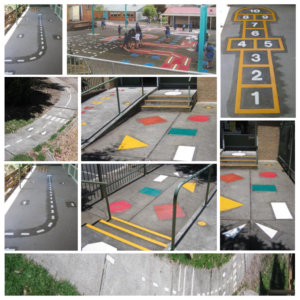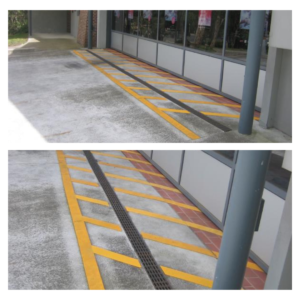Description
AWIS PREFORM: MSDS: DPI THERMO PRIMER
MATERIAL SAFETY DATA SHEET: Issued by DPI Australia Pty Ltd Issued date: May 2012
PRODUCT:DPI THERMO PRIMER
Not Classified as Hazardous according to criteria of Worksafe Australia.
Company Details
Company Name: DPI Australia Pty Ltd
Address: 59 Lincoln Street MINTO NSW 2566.
Tel/Fax: Tel: 02 9603 6699 Fax: 02 9603 6698 Email: dpiaustralia@hotmail.com
Identification
Product Name: DPI Thermo Primer Grade 11 Spray applied.
UN Number: 1866
Hazchem: 3(Y)E
DG Class: 3.2
Packing Group: 11
Product Use: DPI Primer is used as an intermediate coat between poor
bituminous substrate / Concrete surfaces and Thermo Plastic.
Ingredients:
| Chemical Entity | CAS | Proportions % |
| Toluene | 108-88-3 | 70-85% mass |
| Resin (Synthetic Resins) | 64742-16-1 | 15-30% Mass |
Appearance: slightly turbid syrupy solution.
All Data provided from this point onwards is as for the major component – Toluene.
Flash Point: 4C.
Specific Gravity: 0.87
Solubility in Water: negligible.
Soluble in most organic solvents.
Health Hazard Information
Health Effects
Moderate eye and skin irritation, Prolonged, repeated skin contact with low viscosity materials may defat the skin resulting in possible irritation and dermatitis. Respiratory irritation, dizziness, nausea, loss of consciousness
Acute – Indigestion: Slightly Toxic.
Acute – Eye: Moderate Irritant
Acute – Skin: Slightly Toxic and moderate irritant.
Acute – Inhalation: Practically non-toxic
Chronic: (refer to health effect above)
| Toxicity Irritation Oral Dermal Inhale Eye Skin MATERIAL HAZARD COD (MHC) | Oral | Toxicity Dermal | Inhale | Eye | Irritation Skin |
| Mobil assigned codes 0-4 with 0 indicating lowest MHC classification | 1* | 1* | 0* | 2* | 2* |
| (NA= Not Applicable, NE= Not Established, C= Corrosive) | |||||
| (*indicates estimated code based on testing of simular products and/or the components) | |||||
First Aid
Inhalation
Using proper respiratory protection, immediately remove the affected person from exposure. Administer EAR if breathing is stopped. Keep at rest Call for prompt medical attention.
Skin Contact
Flush with copious amounts of water; use soap if available.
Remove grossly contaminated clothing, including shoes and launder before reuse
Eye Contact
Flush eyes with copious amounts of water until irritation subsides. If irritation persists seek medical attention.
Ingestion
If swallowed DO NOT induce vomiting. Keep at rest seel medical attention (Advise to Doctor Treat according to symptoms.)
Precautions for use
Eye protection: Chemical goggles should be worn.
Skin Protection: Impervious gloves MUST be worn.
Inhalation: Approved respiratory protection MUST be used when vapour or mist concentrations are unknown or exceed the Worksafe exposure Standards.
Flammability
Fire hazards: Highly Flammable. Lower explosive limit: 1.2% Upper explosive Limit: 1.7%
Extinguishing Media: Foam, Dry Powder, CO2 and Water Fog.
Safe Handling Information
Spills and Disposal: Contain and absorb on fire retardant treated sawdust< diatomaceous earth, etc. Scrape up and remove. Dispose of at an appropriately licensed waste disposal site in accordance with local, State and federal regulations.
For large spills: Contain material and pump back to holding tank for later disposal. Mix a compatible chemical which is less combustible and incinerate in accordance with current Local, State and Federal Regulations
Fire Fighting Measures
Fire Fighting Procedures: Use water spray to cool fire exposed surfaces to protect personnel. Shut off “fuel” to fire. If a leak or spill has ignited, use water sprays to disperse the vapours to protect men attempting to stop leak.
Either allow fire to burn under controlled conditions or extinguish with foam or dry chemical. Try to cover liquid spills with foam.
Special Fire precautions: Avoid spraying water directly into storage containers due to danger of boil over See also
“First Aid” as well as “OTHER INFORMATION”
Physical and Chemical Hazards / Fire and Explosion hazards
Extreme hazard: Leaks of gas or spills or spills of liquid can readily form flammable mixtures at temperatures at or above the flash point.
Static Discharge: Product can accumulate static charges which can cause an incendiary electrical discharge.
Reactivity Data: Stability (Thermal, Light, etc.)
Stable Conditions to avoid: Heat, Sparks, Flame, and build up of static electricity. Incompatibility
(Materials to Avoid): Strong oxidisers, Hazardous Decomposition Products:
Carbon Monoxide: Hazardous
Polymerization: Will not occur
Toxicology
Acute
Inhalation: Vapour concentrations above recommended exposure levels may be irritating to the eyes and respiratory tract, may cause head aches and dizziness, could be anaesthetic and may have other central nervous system affects. Negligible hazards at ambient temperature (-18-38 Deg C)
Skin Contact: Frequent or prolonged contact may defat and dry the skin, leading to discomfort and dermatitis.
Occasional brief contact with the liquid will not result in significant skin discomfort unless evaporation is impeded.
Toluene has been shown to be slightly irritating but not sufficiently to trigger an EU Classification.
Eye Contact: Will cause eye discomfort, but will not injure eye tissue
Ingestion: Small amounts of liquid aspirated into the respiratory system during ingestion or from vomiting may cause bronchopneumonia or pulmonary edema. Low order of toxicity
Other Information
Additional Information on the use of material is available on request.
Contact Point
For further information contact:
Technical/ General Manager: DPI Australia Pty Ltd
Tel: + 61 2 9603 6699 Fax: +61 2 9603 6698 Email: dpiaustralia@hotmail.com











There are no reviews yet.